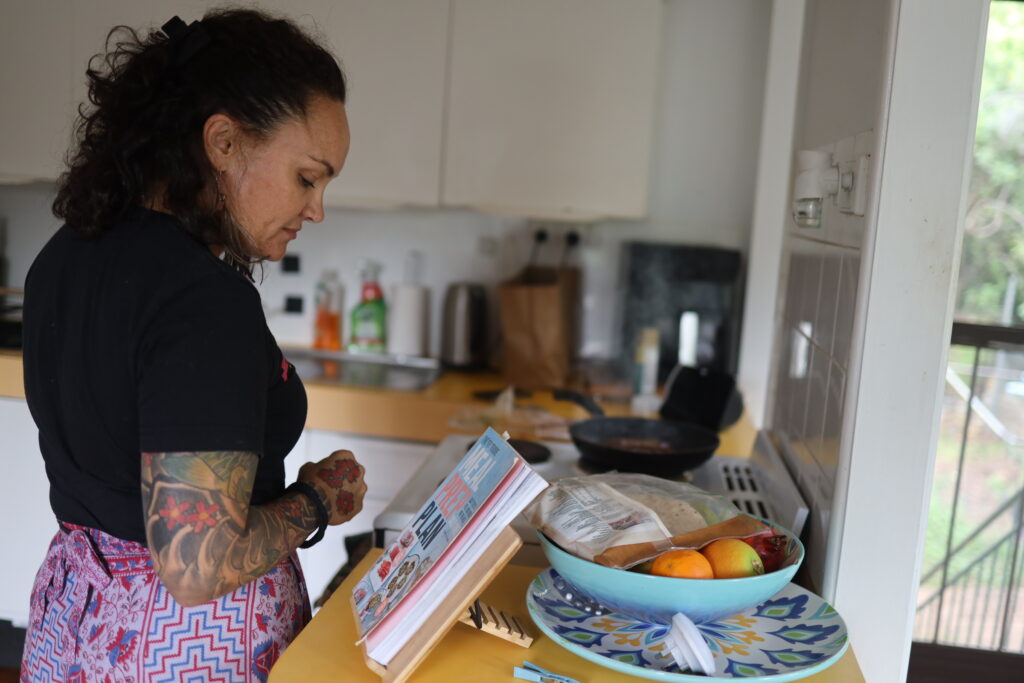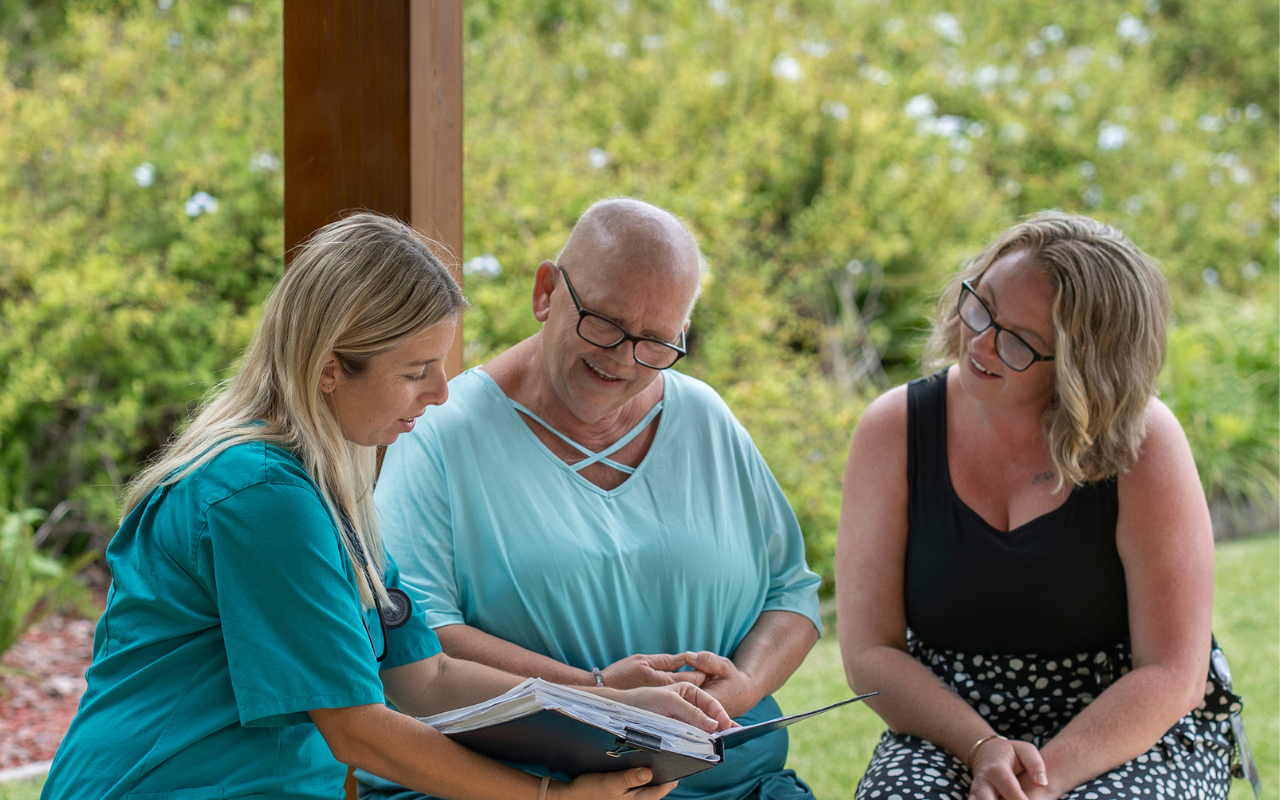An Indigenous-led cancer prevention and care project will create better connections, communication, and cultural safety, in Aboriginal and Torres Strait Islander communities across Northern Queensland.
InSight+ spoke with Chief Investigator Professor Gail Garvey (AM) about the Empowering Indigenous Communities project, which received a $2.5 million funding boost from Cancer Australia to address disparities in cancer incidence and mortality for Aboriginal and Torres Strait Islander communities.
Cancer incidence and mortality are significantly more common amongst Indigenous Australians than amongst non-Indigenous Australians, with larger gaps for regional and remote communities including in Northern Queensland.
Professor Garvey is a proud Aboriginal woman from the Kamilaroi Nation, an NHMRC research leadership fellow, and professor of Indigenous health research in the Faculty of Health, Medicine and Behavioural Sciences at the University of Queensland.
“We were very happy to receive funding from Cancer Australia to support a project we’ve been developing with our community organisations here in Queensland for over nine months,” said Prof. Garvey.
The project brings together an Indigenous-led team of collaborative partnerships between First Nations community-controlled organisations, cancer services, research institutes and a diverse multi-disciplinary team.
The team will identify, and co-design, place-based strategies with community organisations to connect Aboriginal and Torres Strait Islander communities across Queensland health sectors.
Data from the 2024 Achieving Health Equity in Cancer Care with Aboriginal and Torres Strait Islander Queenslanders Framework Report show one-third of Queensland’s Hospital and Health Service areas are responsible for more than 50% of new cancer cases and deaths, with Northern Queensland identified as one of these key regions.
Good ideas start with Indigenous communities
Prof. Garvey said that it is crucial that programs in Aboriginal and Torres Strait Islander health are developed with Indigenous communities, and that they are based on community-identified priorities, and use Indigenous methodologies.
“The project is about strengthening agency, equity, and connections in cancer care and prevention. The aim of this project is to connect communities across Northern Queensland, to optimise cancer care, but also to achieve long-term benefits for those communities through focusing on their priorities and needs,” said Prof. Garvey.
The group identified issues such as patients travelling from remote locations to larger centres, such as Townsville and, and being separated from family and community support in unfamiliar environments.
“Stronger connections between community organisations and cancer services are essential to support patients locally, improve care coordination, and enhance cultural and social support,” said Prof. Garvey.
“The project will address these disconnections by targeting key opportunities for increasing patient awareness and education and strengthening the Regional Community of Practice and care co-ordination across multiple areas of the cancer continuum.”
“It’s about deepening relationships with existing programs and services. So that’s not our only role, but that’s one of the major activities that we’ll be doing in this grant.”

Connecting within and across communities
Prof. Garvey said that while there are plenty of programs that support either cancer prevention, health promotion, or support people with cancer, one issue is that the existing programs don’t connect well with Aboriginal and Torres Strait Islander peoples and communities.
“The focus, from the First Nations communities we engaged, is that they wanted people in the community that can help build, or bridge, this connection. They wanted a strength-based approach that came from the ground up, from the community, to then link in with cancer services,” she said.
“One of the main approaches we will use to achieve this is by co-designing a new role, called ‘cancer connectors,’ and employing them in each of the participating community organisations.”
“These community connectors will assist patients in their communities to navigate their cancer care. Whether they’ve got to go to one centre or another, or even come down to Brisbane.”
“Another aspect of their role will be to facilitate better connections with other cancer services across Northern Queensland.”
“For example, a cancer connector could work with local Aboriginal Community Controlled Health Organisations (ACCHOs) and cancer services to coordinate screening, provide culturally safe education about prevention and treatment, and support patients travelling to centres such as Townsville for care.”
“These roles are so important. They will bridge the gap between community and other services. They represent a central communication and co-ordination point between patients, clinicians and other cancer and community service providers.”
Another role of the project will be increasing awareness and education.
“For example, familiarisation with the importance of cancer screening. A lot of our mob are worried about getting cancer, and so they think by not getting the screens, they’re not going to find out about cancer, you know?” said Prof. Garvey.
“So there’s an opportunity to improve health literacy, and that understanding of the importance of early detection and cancer screening programs. And knowing that if cancer is detected early, treatment and other options are more likely to be successful,” she said.
“A whole-of-community approach will be employed. We don’t want it to be siloed. By utilising the cancer connectors, we get the community coming together to yarn up, and talk about cancer in a more strength-based way.”
Bridging disconnections, strengthening the Community of Practice
Prof. Garvey said that part of providing better cancer treatment and prevention for Indigenous people is avoiding the disconnections between parts of the system.
It is also about prioritising cultural safety at every stage.
“Whether cancer services are in Queensland, or anywhere in Australia, it’s critically important that they provide culturally safe and responsive care for Aboriginal and Torres Strait Islander people,” said Prof. Garvey.
“Our mortality rates are so high, our treatment completions are lower, and there are delays for our mob all over the cancer continuum and the cancer care pathway,” she said.
“The priority is to strengthen culturally safe, coordinated, and timely cancer care designed and delivered in partnership with Aboriginal and Torres Strait Islander peoples, ensuring equitable access, earlier diagnosis, and improved treatment completion and survival outcomes.”
“An important component of a culturally safe service is having an Aboriginal and Torres Strait Islander health workforce. Like what’s happened in other areas, such as diabetes and cardiovascular care.”
“It can make a big difference to Aboriginal and Torres Strait Islander people feeling comfortable accessing that service.”
“That doesn’t mean that all the responsibility for culturally safe care is on that Aboriginal person, because all health professionals need to provide that culturally safe and competent care.”
“Taking the time to show respect, build trust and acknowledge the person and their culture is really important.”
Prof. Garvey emphasises that it’s essential for all health professionals to strengthen their communication skills to ensure that Aboriginal and Torres Strait Islander peoples fully understand their care, and feel respected and supported throughout their cancer journey.
She said that one key step is identifying whether a patient is Aboriginal or Torres Strait Islander at every step, something that can be overlooked.
“Identifying whether a patient is Aboriginal and/or Torres Strait Islander is essential to providing culturally safe and responsive care”.
“It will go a long way to Aboriginal and Torres Strait Islander people continuing to be engaged in cancer services, and potentially get better outcomes.”
The Empowering Indigenous Communities project received a $2.5m Cancer Australia – Improving First Nations Cancer Outcomes: 2024 Partnerships for Cancer Research grant.
Becca Whitehead is a freelance journalist and health writer. She lives in Naarm and is a regular contributor to the MJA’s InSight+.
Subscribe to the free InSight+ weekly newsletter here. It is available to all readers, not just registered medical practitioners.

 more_vert
more_vert